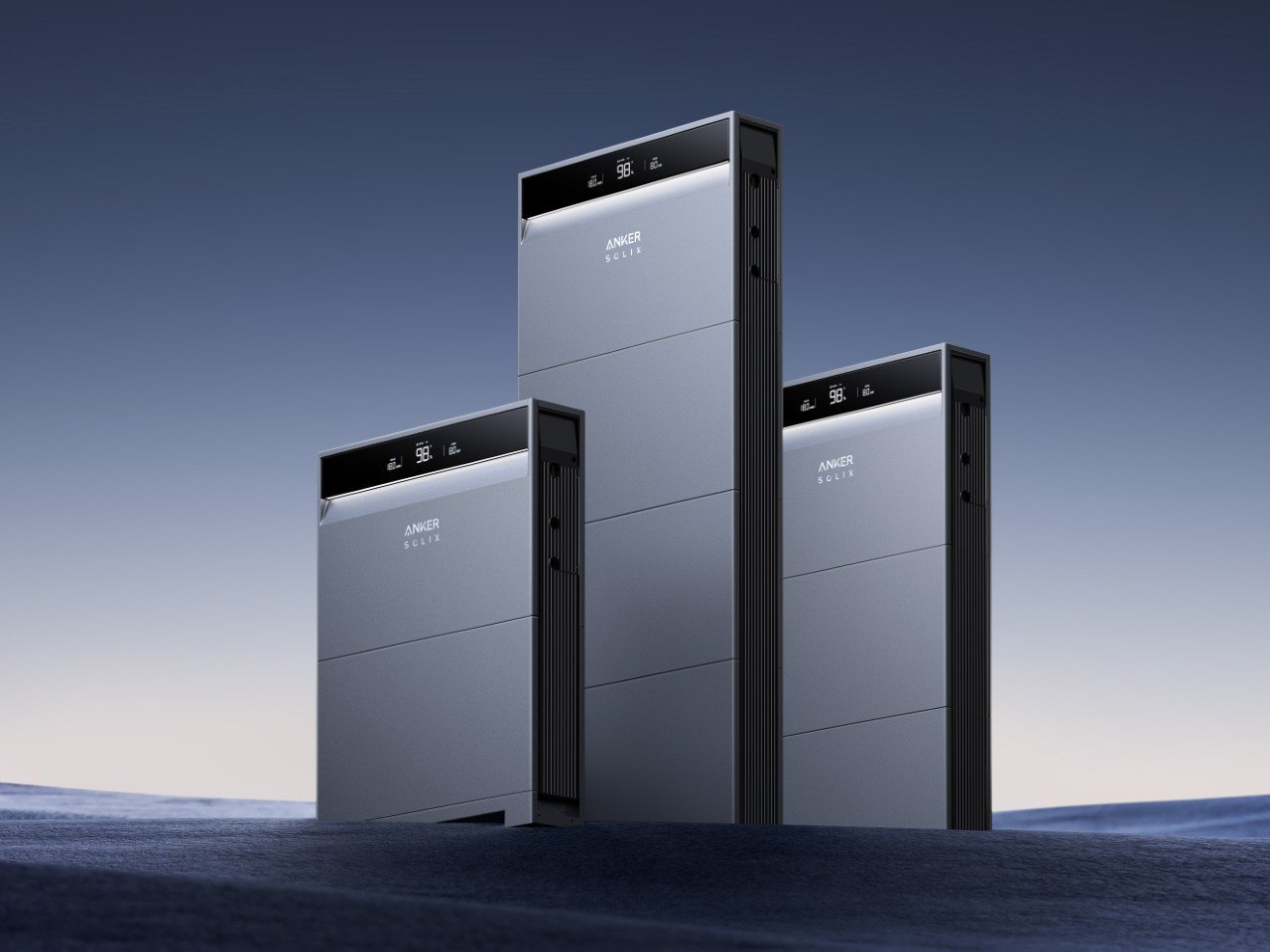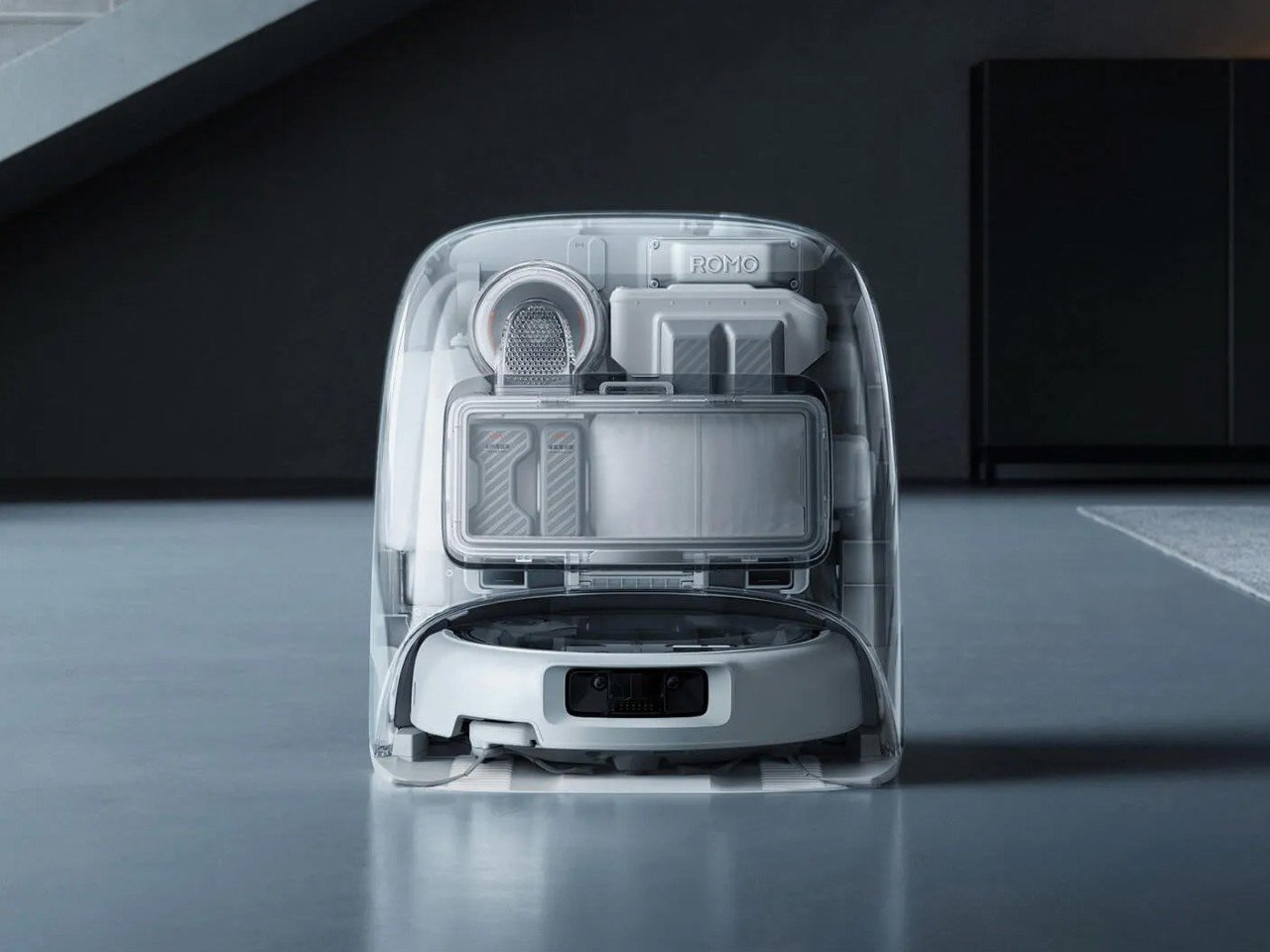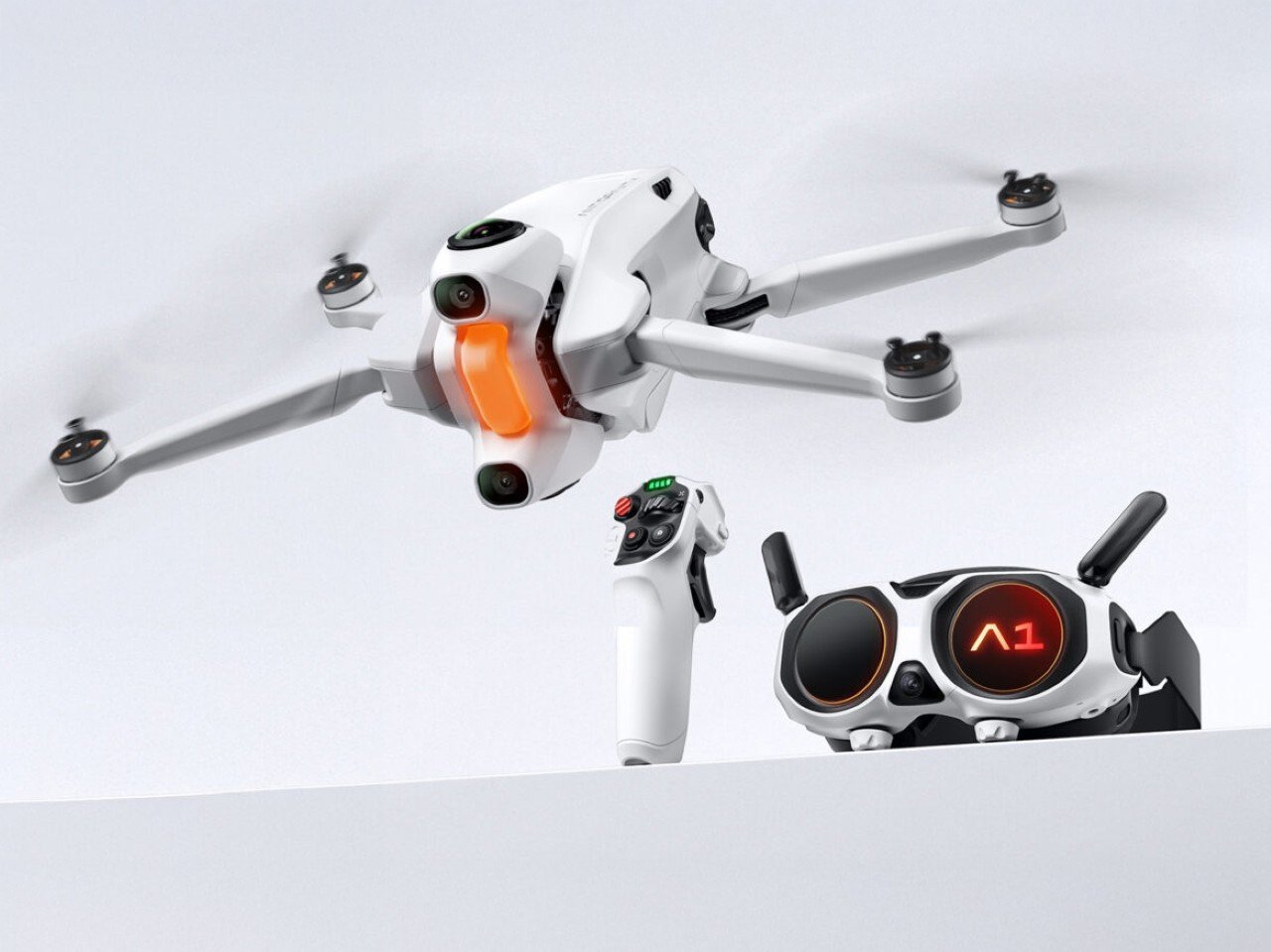AI Insights
What To Expect at IFA 2025: More than just ‘Artificial Intelligence’

There’s a hush before the gates open, but everyone in the Berlin tech orbit feels it: IFA 2025 is about to hit. The pre-show hype is thick with rumor and calculated leaks, while press passes and demo invites pile up like confetti. For anyone who rides the intersection of design, product, and culture, this expo is the real tech Olympics. Forget the corporate self-congratulation of some US shows. IFA is where major European taste meets global ambition, and the world’s sharpest brands are forced to impress an audience that actually knows its gadgets. I’m here to map out what to expect, what to care about, and what to ignore.
Scan the exhibitor list and you see the usual suspects – Samsung, LG, Sony, Miele, Bosch, TCL, Hisense – but this year, their collective muscle is wrapped around a fresh set of obsessions: AI that’s finally practical, sustainability that’s more than greenwash, smart homes that feel less like tech demos and more like genuine upgrades, and a relentless push for premium in TVs, audio, and even robot vacuums. Expect surprises, expect spectacle, but most of all, expect a new baseline for what your next tech purchase should deliver.
AI That Actually Thinks


LG’s AI Appliances Orchestra
Forget the vaporware and sci-fi nonsense. AI at IFA 2025 is about real-world value. LG’s “AI Appliances Orchestra” concept lands right in the sweet spot, connecting their entire suite of appliances to the ThinQ ON hub. FURON, their AI agent, runs the show, serving up proactive maintenance alerts, energy optimization, and a kind of household choreography that feels more like a service than a gimmick. LG is betting heavily that European homeowners want less friction, more smarts, and zero drama from their kitchens and laundry rooms.
Samsung’s Bespoke AI Jet Bot Steam Ultra doesn’t play second fiddle. This robot vacuum pairs AI navigation with a proper steam mop and a camera for home monitoring. It runs on Samsung’s Knox security platform, which gets a UL Diamond IoT security rating. That matters if you actually care about privacy and not just clean floors. The specs? Expect multi-pattern 3D LiDAR, adaptive scanning on the fly, and a camera that doubles as a home security feed.
Then there’s Nvidia, lurking at the edge of consumer and pro. Their AI content creation tools and smart device integrations are getting baked into everything from streaming rigs to next-gen TVs. Think real-time video upscaling, AI-driven audio optimization, and generative editing in the hands of everyday users. The AI conversation at IFA is shifting from “what if” to “why isn’t yours smarter yet?”
Smart Home, Smarter Living


Miele Triflex HX3 Pro Aqua
Smart home brands at IFA are finally showing some respect for design and durability. Miele drops the Triflex HX3 Pro Aqua: a cordless vacuum that also mops, all wrapped in a design language that actually looks good in a European apartment. Miele’s pitch isn’t “look at my robot” but “don’t think about cleaning at all.” Their integrations let you automate schedules, tap into remote diagnostics, and get energy usage breakdowns that are actually useful.
Ecovacs, Roborock, Dreame, and the new kid, DJI (yep, the drone guys), are all competing for the robot vacuum crown. DJI’s Romo series borrows drone navigation tech for hyper-accurate mapping, while Ecovacs doubles down on AI obstacle avoidance. Narwal and Tineco bring clever tweaks, but the arms race is clear: more sensors, fewer crashes, better pathfinding, and apps that don’t make you want to throw your phone out the window.
Haier, Electrolux, and Bosch are all flexing hard with smart appliances. Their latest fridges, ovens, and washers are IoT-connected, energy-starved (in the good way), and designed for the kind of interoperability that European buyers expect. Think appliances that talk to each other about when to run cycles, or ping your phone when it’s time for a filter change. BSH’s new lines are especially promising, pushing for open standards rather than walled gardens.
Sustainability: Beyond Greenwashing


Anker Solix X1
The EU has teeth when it comes to regulation, and IFA shows how that’s driving real product innovation. Samsung’s Bespoke AI Laundry Combo is a textbook case: A-grade energy efficiency, a 98-minute wash and dry cycle, and smart dosing to save water and detergent. That’s a product built for actual resource scarcity, not just a sticker on the box. Samsung claims measurable reductions in annual energy cost for the average user – watch for those numbers to get fact-checked on the show floor.
Anker’s Solix X1 is the kind of home energy storage tech that gets off-grid nerds drooling. It stores enough juice to run an EV for days and can be recharged by solar or grid. Specs point to modular expansion, app-based load management, and compatibility with most major inverter brands. In an era when home battery systems are finally breaking into the mainstream, Anker’s pitch is about reliability and open standards, not just backup during blackouts.
LG’s new French-door refrigerators and AI-driven laundry solutions keep hammering the point: space-efficient, lower power draw, and designed for longer product lifespans. The company is investing in materials that are actually recyclable and repairable, and their PR teams are smart enough to know that savvy IFA visitors will ask tough questions about sourcing and lifecycle.
TVs, Audio, and the Premium Push


CANVAS HiFi Frame
Super-premium is the word, and every major brand is showing up with a flagship. Samsung, LG, Sony, TCL, Hisense, and Metz are all rolling out new 8K, OLED, and microLED panels. LG’s cloud gaming portal and new gaming monitors (look out for the specs on latency and HDR) are aimed straight at the living room and the esports crowd. Samsung’s AI-powered upscaling and real-time scene analysis should make a real difference for everything from Netflix to live sports.
Projector nerds are getting spoiled too. Xgimi’s MoGo 4 lineup brings built-in batteries, laser brightness upgrades, and Google TV integration, all under 2 kg. That’s portable cinema that doesn’t compromise on clarity or color accuracy. Expect the battle between projectors and traditional TVs to get fresh fuel this year, especially as more people blend home and travel.
Audio isn’t getting left behind, either. We just recently covered CANVAS HiFi’s staggering €10,000 soundbar designed to fit around the Samsung TV Frame. Speaking of Samsung, the company is showcasing its Sound Tower Bluetooth Speaker on the floor too. Gaming company Gravastar showcased some rather stunning speakers last year, and we’re expecting the same this year too.
Digital Health and Beauty Tech


Ulike Me 2025 Series
The wellness wave is everywhere. Ulike’s AI-powered beauty devices bring pro-level skin analysis and customizable at-home treatments into the mainstream. Samsung and LG are pushing smartwatches that do more than count steps. These wearables now serve as full-time health coaches, delivering real-time suggestions and actionable data, not just passive metrics. The algorithms are getting smarter, using your week-to-week trends to fine-tune advice and flag anomalies. Ringconn, Ultrahuman, and Noise are sure to showcase their latest fitness wearables too. Amorepacific is set to launch ‘ONFACE,’ a high-end micro-LED mask developed by its AI-enhanced beauty device brand, ‘makeON.’
IFA’s digital health zone is also thick with startups chasing the holy grail: home diagnostics that don’t require a PhD to operate. Expect blood oxygen sensors, ECG-enabled watches, and a new generation of sleep trackers to fight for attention, each promising medical-grade accuracy with consumer-level simplicity.
Mobility and the Connected Home


DJI Romo Robot Vacuum
Anker’s new EV chargers and portable power stations are perfectly timed. With Europe’s push for electrification, these devices offer faster, smarter charging and backup solutions that play nicely with solar. DJI’s leap into home cleaning with the Romo series is a signal that robotics is about to get much more mainstream, leveraging navigation precision that’s been honed in the air for use on your living room rug.
E-bike and e-scooter brands are expected to flaunt new models with better range, smarter anti-theft, and app-based controls that actually work. The story here is integration: your home, your vehicle, your grid, one data platform. Expect product managers to be grilled on security, open APIs, and fail-safes.
IFA’s mobility hall is where you’ll find the quietly radical: energy management systems that sync home and car, 5G/6G routers built for seamless handoff between fixed and mobile networks, and home security kits that leverage AI for facial recognition and package detection.
Content Creation Goes Pro


Insta360 Antigravity A1 Drone
The influencer economy is getting its own stage this year. DJI and Insta360 are in a pretty heated battle, with the former entering the 360° video space and the latter building their own drone startup to challenge the DJI monopoly. Insta360 and Leica are working to debut a new product on the 5th of September, too.
IFA’s partnership with Webedia means 35 hours of live content, streamed straight from the show floor. The “Find Your Next Tech” show will feature hands-on demos, interviews with designers, and plenty of behind-the-scenes looks at what actually gets shown to press vs. the public. Expect a parade of microphones, gimbals, and AI-driven camera tools aimed directly at creators.
The bottom line: the creator tech on display is no longer a sideshow. It’s built into the DNA of the show, reflecting the way real consumers discover and evaluate new products. If you’re launching hardware in 2025 and you’re not thinking about how it’ll look on TikTok or Twitch, you’re missing the plot.
Final Thoughts
IFA 2025 is the year when the hype cycle finally meets reality. The products on display aren’t just proof-of-concept; they’re ready for the living room, the kitchen, the commute, and the studio. The specs are better, the software is smarter, and the design teams are clearly paying attention to what people want, not just what they can engineer. My advice: tune out the noise, dig into the details, and keep an eye on the brands willing to show their work, not just their marketing. Berlin in September is about to get loud.
AI Insights
Transparency is key as AI gets smarter, experts say

To gain the U.S. government’s trust, advanced AI systems must be engineered from the outset with reliable components offering explainability and transparency, senior federal and industry officials said Friday.
“This [topic] is something I think about a lot,” the CIA’s chief AI officer Lakshmi Raman noted at the Billington Cybersecurity Summit. “And in our [community], it’s about how artificial intelligence can assist and be an intelligence amplifier with the human during the process, keeping their eyes on everything that’s happening and ensuring that, at the end, they’re able to help.”
During a panel, Raman and other current and former government officials underscored the importance of guardrails and oversight — particularly as the U.S. military and IC adopt the technology for an ever-increasing range of operations, and experts predict major breakthroughs will emerge in certain areas within the next few years.
“Trust is such a critical dimension for intelligence,” said Sean Batir, a National Geospatial-Intelligence Agency alum and AWS principal tech lead for frontier AI, quantum and robotics.
Frontier AI refers to next-generation systems, also dubbed foundation models, that are considered among the most powerful and complex technologies currently in development. These likely disruptive capabilities hold potential to unlock discoveries that could be immensely helpful or catastrophically harmful to humanity.
Departments across the government have been expanding their use of AI and machine learning over the past several years, but defense and national security agencies were some of the earliest adopters. Recently, in July, questions started swirling after the Pentagon’s Chief Digital and AI Office (CDAO) revealed new, separate deals with xAI, Google, Anthropic and OpenAI to accelerate the enterprise- and military-wide deployment of frontier AI.
“ChatGPT, our flagship product, has upwards of 800 million users every day. So one-tenth of the world is using ChatGPT in various forms,” said Joseph Larson, vice president and head of government business at OpenAI. “At an individual level, AI is there. The more challenging question [for] my job is, with government [use], what does AI adoption look like at an institutional level?”
Larson previously served from 2022 to 2024 as the Pentagon’s first-ever deputy chief digital and AI officer for algorithmic warfare.
“When we talk about institutions, what does that require above and beyond just access to the technology and the foundation models? It requires, really, a partnership. And that partnership extends to questions around infrastructure, around data, and I think, key, around security,” he said. “And what are the security implications for AI as it moves from just something that you communicate with, that informs maybe a workflow, to something that’s part of an agentic system that’s actually operating in your environment and that has its own controls and authorities? So, those institutional challenges are really the ones that are driving our work within the government today.”
Both OpenAI and Anthropic have reportedly disclosed recent efforts to implement new guardrails because their models appear to be approaching high-risk levels for potentially helping produce certain weapons.
On the panel, Anthropic Chief Information Security Officer Jason Clinton noted that “trust is something that is built up over time.”
“In order to do that, there is a human — and there is a supervisory role — for these models. The one thing that those models will never be able to do is to bring humanity to the equation, right? We will. We will always need to bring our perspective, our values, our institutional wisdom, to what we’re asking the models to be doing,” Clinton said.
He and the other panelists spotlighted multiple risks and threats posed by emerging frontier AI applications. For instance, prompt injections are a type of cyberattack that happen when malicious users craft inputs to an AI system to trick the model into performing unintended or dangerous actions, such as revealing sensitive data or generating unsafe material.
“I’m very optimistic that we will solve some of the more fundamental guardrail problems — like prompt injection — within three-ish years, I guess,” Clinton said. “And the models will be getting smarter, so I suspect the ways that we interact with them will evolve towards more like having a virtual coworker beside you, who you interact with and who learns and adapts … and sort of grows with you in your environment.”
The panelists also discussed the potential power of cutting-edge AI to help reduce vulnerabilities in software by automatically finding and fixing bugs in code and zero-day exploits.
“DARPA just ran a competition at DefCon [hacking conference] that demonstrated the future possibilities there,” said Dr. Kathleen Fisher, director of that agency’s Information Innovation Office.
For the event, officials pulled 54 million lines of code across 20 different repositories that were recommended by critical infrastructure operators who use them to do their daily business.
“The teams that ran the competition planted 70 systemic vulnerabilities that were patterned after real vulnerabilities that people have struggled with. The teams found 54 of those systemic vulnerabilities, and they patched 43 of them. More importantly, or at the same time, they found 18 zero-days, and they patched 11 of those. It took about 45 minutes to find and fix vulnerability at a cost of $152. Think about what that might mean in the future — like this is the worst that technology is ever going to be,” Fisher said. “Think about what that might mean in the context of things like Volt Typhoon, and Salt Typhoon, and ransomware that is currently plaguing our hospitals. When a hospital gets affected by a ransomware attack — when it shuts down for any period of time — that puts people’s lives at risk.”
Building on that, Microsoft Federal Chief Technology Officer Jason Payne added: “This is the worst version of the technology we will ever use. I also feel like we have the lowest amount of trust in technology, right? And I think if we all use it more, if we experience it more, we’ll sort of understand what it is and what it’s capable of.”
He continued: “Security, governance and explainability are key themes that we’re looking for to kind of build that trust. And at the end of the day, I think government agencies are looking for organizations that are transparent with their AI systems.”
AI Insights
This sociologist worries about AI’s impact on US workers

The unemployment rate has ticked up in recent months and layoffs have been in the headlines all year. There are a plethora of reasons behind that labor market shift, but one that’s been cited directly by some companies like Salesforce, Indeed and Glassdoor is artificial intelligence adoption.
While it’s clear that AI is rapidly changing many aspects of our economic landscape, it remains to be seen what the technology’s ultimate impact on the labor market will actually be.
Jeff Dixon is a sociology professor at College of the Holy Cross. He wrote a piece for The Conversation titled, “The US really is unlike other rich countries when it comes to job insecurity — and AI could make it even more ‘exceptional.’” He joined “Marketplace” host Kimberly Adams to discuss his concerns with AI’s long-term effects on the stability of the American worker.
To hear their conversation, use the audio player above.
AI Insights
Anthropic makes its pitch to DC, warning China is ‘moving even faster’ on AI

Anthropic is on a mission this week to set itself apart in Washington, pitching the government’s adoption of artificial intelligence as a national security priority while still emphasizing transparency and basic guardrails on the technology’s rapid development.
The AI firm began making the rounds in Washington, D.C., on Monday, hosting a “Futures Forum” event before company co-founders Jack Clark and Dario Amodei head to Capitol Hill to meet with policymakers.
Anthropic is one of several leading AI firms seeking to expand its business with the federal government, and company leaders are framing the government’s adoption of its technology as a matter of national security.
“American companies like Anthropic and other labs are really pushing the frontiers of what’s possible with AI,” Kate Jensen, Anthropic’s head of sales and partnerships, said during Monday’s event. “But other countries, particularly China, are moving even faster than we are on adoption. They are integrating AI as government services, industrial processes and citizen interactions at massive scale. We cannot afford to develop the world’s most powerful technology and then be slow to deploy it.”
Because of this, Jensen said adoption of AI into the government is “particularly crucial.” According to the Anthropic executive, hundreds of thousands of government workers are already using Claude, but many ideas are “still left untapped.”
“AI provides enormous opportunity to make government more efficient, more responsive and more helpful to all Americans,” she said. “Our government is adopting Claude at an exciting pace, because you too see the paradigm shift that’s happening and realize how much this technology can help all of us.”
Her comments come as the Trump administration urges federal agencies to adopt automation tools and improve workflows. As part of a OneGov deal with the General Services Administration, Anthropic is offering its Claude for Enterprise and Claude for Government models to agencies for $1 for one year.
According to Jensen, the response to the $1 deal has been “overwhelming,” with dozens of agencies expressing interest in the offer. Anthropic’s industry competitors, like OpenAI and Google, also announced similar deals with the GSA to offer their models to the government for a severely discounted price.
Beyond the GSA deal, Anthropic’s federal government push this year has led to its models being made available to U.S. national security customers and staff at the Lawrence Livermore National Lab.
Anthropic’s Claude for Government models have FedRAMP High certification and can be used by federal workers dealing with sensitive, unclassified work. The AI firm announced in April that it partnered with Palantir through the company’s FedStart program, which assists with FedRAMP compliance.
Jensen pointed specifically to Anthropic’s work at the Pentagon’s Chief Digital and AI Office. “We’re leveraging our awarded OTA [other transaction agreement] to scope pilots, we’re bringing our frontier technology and our technical teams to solve operational problems directly alongside the warfighter and to help us all move faster.”
However, as companies including Anthropic seize the opportunity to collaborate with the government, Amodei emphasized the need for “very basic guardrails.” Congress has grappled with how to regulate AI for months, but efforts have stalled amid fierce disagreements.
“We absolutely need to beat China and other authoritarian countries; that is why I’ve advocated for the export controls. But we need to not destroy ourselves in the process,” Amodei said during his fireside chat with Clark. “The thing we’ve always advocated for is basic transparency requirements around models. We always run tests on the models. We reveal the test to the world. We make a point of them, we’re trying to see ahead to the dangers that we present in the future.”
The view is notably different from some of Anthropic’s competitors, which are instead pushing for light-touch regulation of the technology. Amodei, on the other hand, said a “basic transparency requirement” would not hamper innovation, as some other companies have suggested.
-

 Business2 weeks ago
Business2 weeks agoThe Guardian view on Trump and the Fed: independence is no substitute for accountability | Editorial
-
Tools & Platforms1 month ago
Building Trust in Military AI Starts with Opening the Black Box – War on the Rocks
-

 Ethics & Policy2 months ago
Ethics & Policy2 months agoSDAIA Supports Saudi Arabia’s Leadership in Shaping Global AI Ethics, Policy, and Research – وكالة الأنباء السعودية
-

 Events & Conferences4 months ago
Events & Conferences4 months agoJourney to 1000 models: Scaling Instagram’s recommendation system
-

 Jobs & Careers3 months ago
Jobs & Careers3 months agoMumbai-based Perplexity Alternative Has 60k+ Users Without Funding
-

 Podcasts & Talks2 months ago
Podcasts & Talks2 months agoHappy 4th of July! 🎆 Made with Veo 3 in Gemini
-

 Education3 months ago
Education3 months agoVEX Robotics launches AI-powered classroom robotics system
-

 Education2 months ago
Education2 months agoMacron says UK and France have duty to tackle illegal migration ‘with humanity, solidarity and firmness’ – UK politics live | Politics
-

 Podcasts & Talks2 months ago
Podcasts & Talks2 months agoOpenAI 🤝 @teamganassi
-

 Funding & Business3 months ago
Funding & Business3 months agoKayak and Expedia race to build AI travel agents that turn social posts into itineraries

